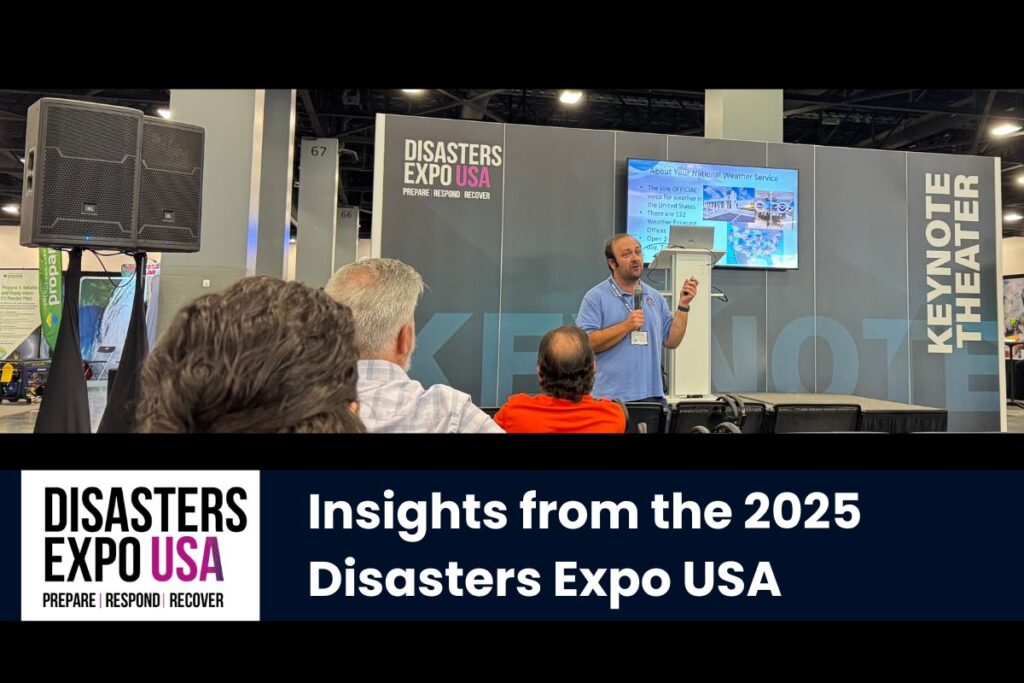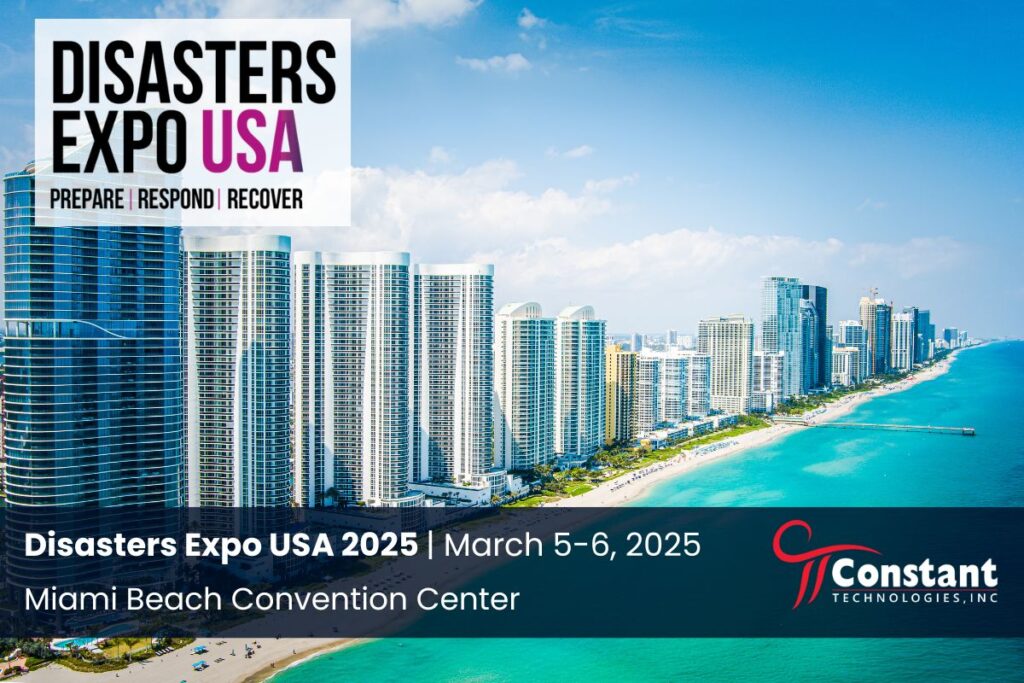Discussions at the Disasters Expo USA 2025 highlighted the growing frequency, severity, and cost of disasters. Beyond the billions lost in infrastructure, disasters take a devastating toll on human lives, displacing communities, and leaving lasting emotional and social impacts. Several sessions emphasized the importance of reducing risk.
A speaker from the United Nations Office for Disaster Risk Reduction (UNDRR) explored this issue in Investing in Disaster Risk Reduction to Address the Increasing Economic Cost of Disasters, while a NOAA/National Weather Service expert led Preparedness and Probabilistic Forecasting. These sessions reinforced the need for proactive disaster management.

The UNDRR 2024 Regional Assessment Report on Disaster Risk (RAR24) conveys that, while risk reduction knowledge has improved, financial investments remain skewed toward post-disaster recovery rather than proactive prevention.
Emergency Operations Centers: A Key to Risk Reduction
A component of proactive disaster management is the Emergency Operations Center (EOC). EOCs play a role in reducing disaster risk by enhancing preparedness, coordination, and response. They serve as information hubs where data, emergency communications, and real-time intelligence come together to enable informed decision-making.
EOCs contribute to effective risk reduction:
- Information Sharing: EOCs provide centralized platforms for gathering and distributing data, ensuring that stakeholders – from local governments to national agencies – have access to the latest information before and during a crisis.
- Pre-Disaster and Real-Time Monitoring: Advanced data analytics and probabilistic models allow EOCs to assess risks based on severity and probability, helping agencies allocate resources efficiently.
- Emergency Communications: Effective communication is vital in any crisis. EOCs provide a centralized command space where first responders, government officials, and the public receive timely and accurate updates.
- Continuity of Operations: EOCs facilitate business and governmental continuity by maintaining operational stability even in the face of major disruptions.
- National Coordination with Critical Infrastructure: By integrating emergency response plans with infrastructure management, EOCs help protect essential services such as transportation, energy, and water systems.
- Resource Allocation: Strategically directing resources before and during a disaster minimizes impact and accelerates recovery efforts.
A key takeaway from the expo’s sessions was that investing in disaster risk reduction (DRR) strategies – such as establishing EOCs, strengthening infrastructure resilience, and integrating disaster planning into development policies – can reduce the human and financial toll of disasters. Additionally, leveraging probabilistic data to anticipate and mitigate risks enables a shift from reactive responses to proactive risk management.

Industry leaders and disaster response experts at the Disasters Expo USA 2025 reinforced the need for EOCs and other proactive measures to minimize disaster impacts, protect lives, and enhance resilience.
Constant Technologies was grateful to participate in this year’s Disasters Expo, engaging in insightful discussions with industry leaders leveraging EOCs to mitigate risks.
If your organization is starting to design and build an Emergency Operations Center, we invite you to book a tour of a recently installed center or take advantage of Constant’s no-cost design services to visualize your space.




